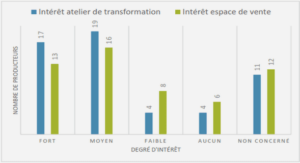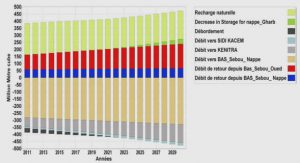Cours molecular weight profiles of control and pressure-treated β-LG solutions, tutoriel & guide de travaux pratiques en pdf.
Materials and methods
Materials
Bovine whey protein β-LG was kindly provided by Davisco Foods International Inc. (Le Sueur, MN, USA). Trypsin VI (lot No: PS9371), a pancreatic enzyme preparation was obtained from Neova (Abbotsford, BC, Canada). Sodium hydroxide (NaOH) was purchased from Fisher Scientific (Ottawa, Toronto, Canada) while hydrochloric acid (HCl) and nitric acid (HNO3) were both provided by Anachemia Canada Co. (Montréal, QC, Canada). Calcium chloride dehydrate (CaCl2.2H2O) was purchased from EMD Chemicals Inc. (Gibbstown, NJ, USA) and sodium dodecylbenzene sulfonate (SDoS) was obtained from Sigma-Aldrich Co. (St-Louis, MO, USA).
Preparation of β-LG solution and High Hydrostatic Pressure Treatment
Three liters of β-LG solution were prepared in triplicate for each condition (control, 400 and 600 MPa) at a concentration of 1.5% (w/v) in distilled water. Solutions were stirred for 60 min at room temperature and stored for 12 h at 4°C before pressurization and analysis. Before HHP treatment, β-LG solutions were transferred into flexible plastic bags. The solutions were pressurized at 400 and 600 MPa for 10 min at room temperature in a discontinuous hydrostatic pressurization unit (Hiperbaric 135, Hiperbaric, Burgos, Spain), as described previously [107]. Non-pressurized β-LG solutions (0.1 MPa) were used as controls.
Tryptic hydrolysis of β-lactoglobulin
Tryptic hydrolysis (E/S ratio of 1:100 (w/w)) of pressure-treated and control β-LG solutions were performed at 37°C, pH 8 for 100 min. During hydrolysis, the pH was maintained by adding 5 N NaOH. After 100 min of enzymatic digestion, the hydrolysis was stopped by adding 10 M HCl to reduce the pH to 1.5 and inactivate the enzyme. Afterwards, pH of hydrolysates was increased to 8.0 by adding 5 N NaOH and stored at 4°C before ultrafiltration experiments.
Ultrafiltration System
Pretreated and control β-LG tryptic hydrolysates were ultrafiltered using a crossflow filtration unit (model SEPA-CF, Sterlitech, Kent, WA, USA) described previously [107]. The UF unit was equipped with a PES flat-sheet membrane (Synder Filtration, Vacaville, CA, USA) with MWCO of 1 kDa. The filtration surface area was 0.014 m2. Before UF experiments, the membrane was conditioned [107] and the pure water flux was measured in triplicate. Membrane coupons with a similar pure water flux value (±10%) were kept for further UF experiments. A spacer and a shim with respective thicknesses of 7.1 x 10-5 and 4.1 x 10-5 m were used on the feed side to ensure a transitional flow regime as a function of an intermediate Reynolds number.
Operational Modes
Total Recycle Mode
In total recirculation mode, both permeate and retentate were recycled into the feed tank to ensure a constant volume. From the three liters of pressure-treated and control β-LG tryptic hydrolysates solutions, one liter was recirculated to determine the optimal filtration parameters to use for the concentration mode. The permeate flux was measured at different transmembrane pressures (TMPs) from 170 to 570 kPa at a constant retentate recirculation rate of 89.6 x 10-3 m.s-1. Each pressure level was held for 10 min until a stable permeate flux value was reached. As described by Leu et al. [107], critical (Jcrit) and limiting (Jlim) fluxes were calculated at the end of UF for non-pressurized and pressure-treated β-LG tryptic hydrolysates at 400 and 600 MPa [107]. Total recycle mode was performed in triplicate, and for each replicate, a new membrane was used.
Concentration Mode
The remaining two liters of the β-LG tryptic hydrolysates were used for UF experiments in concentration mode, for which only retentate was recycled into the feed tank while permeate was removed and collected separately. The same recirculation flow rate and crossflow velocity values obtained for total recycle mode were used and kept constant during concentration mode. As a function of the Jcrit obtained during total recycle mode, a constant TMP of 310 kPa was chosen during UF concentration experiments to avoid early fouling on UF membranes. During the experiment, permeation fluxes of pressure-treated and control hydrolysates were measured every 10 min until reaching a 4X volume concentration factor. At the end of the experiment, permeates and retentates of control and pressure-treated β-LG hydrolysates were immediately freeze-dried and stored at -30°C for further analysis. Concentration mode was performed in triplicate and a new membrane was used for each replicate.
Membrane Fouling Evaluation
After control and pressure-treated hydrolysate concentrations by UF, a rinsing step with water was performed and the UF system was dismantled to recover UF membranes to evaluate peptide fouling. First, flat-sheet membranes were soaked in 100 mL of 0.01M HNO3 for 24h at 4°C with stirring to desorb hydrophilic peptides [108]. The HNO3 solution was recovered and stored at -20°C. The UF membranes recovered after desorption by HNO3 were then soaked in 100 mL of 0.5% (w/v) SDoS solution for 24h at 4°C to recover hydrophobic peptides [75]. The SDoS desorption solutions were stored at -20°C. Both desorption solutions were finally freeze-dried and stored at -30°C until analysis.
Analysis
Molecular weight profiles of control and pressure-treated β-LG solutions
Aggregation profiles of control and pressure-treated β-LG solutions were determined after polyacrylamide gel electrophoresis (PAGE) under native and denaturing conditions using 4-20% acrylamide Bio-Rad Mini-Protean TGX precast gels (Bio-Rad Laboratories, Hercules, CA, USA). For native conditions, 10 µL of β-LG solution was diluted to 1:10 with distilled water. Twenty microliters of each diluted β-LG solution were mixed with the same volume of native sample buffer and 10 µL of each sample was loaded into the wells. The molecular weight marker used was Precision Plus Protein All Blue Standards (Bio-Rad Laboratories, Hercules, CA, USA). The running buffer was prepared by adding 0.1 L of Tris/Glycine (10x) buffer (Bio-Rad Laboratories, Hercules, CA, USA) to 0.7 L of distilled water and 0.2 L of methanol to fill the chamber. Migration was performed at 15 mA for approximately 30 min. The gel was stained for 60 min with a solution of 1% (w/v) Coomassie brilliant blue R-250 (Bio-Rad Laboratories, Hercules, CA, USA), diluted in a mixture of 10% acetic acid, 40% ethanol and 50% distilled water. Finally, the gel was destained overnight in a mixture of 10% methanol, 10% acetic acid and 80% deionized water. For denaturing conditions, the protocol was similar except that 50 µL of β-mercaptoethanol was added to 950 µL of the Laemmli sample buffer (2x) (Bio-Rad Laboratories, Hercules, CA, USA) and the mixture was heated at 100°C for 5 min. Moreover, the migration buffer consisted of a mixture of 0.1 L Tris/Glycine/Sodium dodecyl sulfate (SDS) (10x) buffer (Bio-Rad Laboratories, Hercules, CA, USA) to 0.9 L of distilled water.
Characterization of peptide fractions
Control and β-LG hydrolysates generated after pressurization of β-LG protein, permeates recovered after 4X UF concentration, as well as freeze-dried desorption solutions (HNO3 and SDoS), were analyzed by reversed-phase high-performance liquid chromatography (RP-HPLC). All samples were filtered through a 0.45 µm polyvinylidene fluoride (PVDF) membrane and stored at -20°C prior to RP-HPLC-mass spectrometry (MS) analysis. SDoS solutions were washed using a Pierce Detergent Removal Resin (Thermo Scientific, Rockford, IL, USA) to remove SDoS from the foulant peptide species to prevent any detergent-MS interference and to optimize MS signals. The samples were injected into an Agilent 1100 series system (Santa Clara, CA, USA) equipped with degasser, pump, auto-sampler, and UV detector (set at 214 nm). Peptide profiles were obtained using a Luna 5 µm C18 column (2 mm i.d. × 250 mm, Phenomenex, Torrance, CA, USA). Solvents A and B were 0.1% v/v trifluoroacetic acid (TFA) in water and acetonitrile/water/TFA (90/10/0.1% v/v), respectively, and were used for elution at a flow rate of 0.2 mL.min-1 at 40°C. A linear gradient of solvent B was used from 3 to 55% in 85 min, and from 55 to 100% in 105 min. Peptide analysis was performed with LC/MSD ChemStation software Rev. A. 10.02 (Agilent, Santa Clara, CA, USA). Mass spectrometry analyses were performed to determine the molecular weight (MW) of peptides generated after enzymatic hydrolysis of β-LG as well as peptides recovered in permeates and desorption solutions. The MS system was the same as the one used previously [109]. From the MW obtained after MS analysis, potential peptide sequences, locations in the protein sequence, net charge and pI were obtained using tools available on the ExPASy Bioinformatics Resource Portal (Swiss Institute of Bioinformatics) and the bovine (Bos taurus) β-LG sequence (UniProtKD/TrEMBL # P02754).
Statistical analysis
All pressurization, UF experiments and analyses were carried out in triplicate. The statistical analysis of the data (permeate flux and peptide relative abundance) included an analysis of variance (ANOVA) for repeated measures with mixed procedure at a 95% confidence level (p<0.05). All statistical analyses were carried out with SAS 9.4 software (SAS Institute Inc., Cary, NC, USA).
RESULTS
Impact of high hydrostatic pressure on β-lactoglobulin
Native PAGE of control and pressure-treated β-LG is presented in Figure 15. Protein aggregation occurred under all pressurization conditions (0.1, 400 and 600 MPa), with three specific aggregate populations (X1-X3). However, the intensity of bands corresponding to these protein aggregates (X1-X3) was higher at 600 MPa than at 0.1 and 400 MPa. Moreover, large aggregates were observed in the loading well (X4) only for the 600 MPa condition.
Figure 15: Native PAGE gels of control (0.1 MPa) and pressure-treated (400 and 600 MPa for 10 min) β-LG solutions.
Profiles and molecular weights of tryptic β-lactoglobulin peptides
Figure 16 shows the RP-HPLC peptide profiles of the initial β-LG tryptic hydrolysates obtained after pre-treatment of β-LG at 400 MPa (Figure 16B) and 600 MPa (Figure 16C) for 10 min and prior to the UF process. The control condition (0.1 MPa) hydrolysate is also shown (Figure 16A). In addition, Table 3 presents the MWs of peptides recovered from the different hydrolysates after MS analysis as well as their amino acid sequences, obtained by comparing theoretical MW from ExPASy to the MW determined by MS. The isoelectric point, net charge and abundance in each of the different fractions were also presented. In total, 20 peaks corresponding to 21 different potential peptides (since peak #17 could correspond to YANKY or QEPER due to similar MWs) were identified in the 0.1, 400 and 600 MPa β-LG hydrolysates. Of the 21 peptides, 13 derived from tryptic hydrolysis of β-LG and 7 were identified as potential peptide species generated after bovine serum albumin (BSA) tryptic hydrolysis (Table 3). Since the purity of β-LG was 93%, according to the manufacturers, it is not surprising that peptides originating from other whey proteins were identified. Differences in peptide profile and composition were detected as a function of the pressurization treatment applied to native β-LG protein. The compositions of control and test hydrolysates obtained after pressurization of β-LG at 600 MPa were comparable since the same 17 peptides were commonly detected (Figure 16A, 16C). However, the relative abundance of the peptides in the 0.1 MPa hydrolysate was higher, overall, than that obtained after β-LG pressurization at 600 MPa, specifically for peaks #5, 7, 9, 13 and 15. Compared to the 0.1 and 600 MPa hydrolysates, differences in peptide profile and composition were observed for hydrolysates obtained after pressurization of β-LG at 400 MPa. Indeed, 20 peptides (peaks #18 and 19 were newly generated peptides) were detected while only 18 and 17 peptides were characterized at 0.1 and 600 MPa, respectively. Moreover, the relative abundance of peptides at 400 MPa hydrolysate was higher than other two conditions, specifically for those corresponding to the peaks #2, 3, 5, 8, 9, 11, 12, 13, 16, 17 and 20. However, the relative abundance of peak #7 was drastically reduced.






